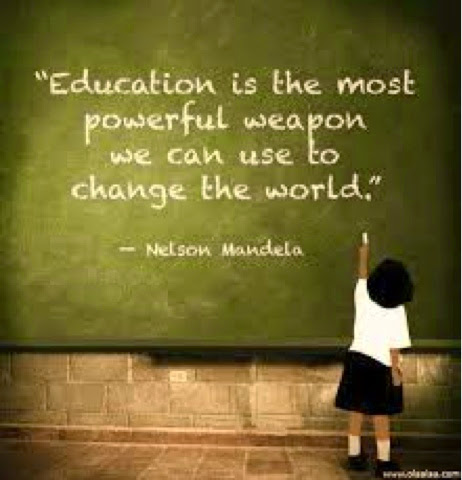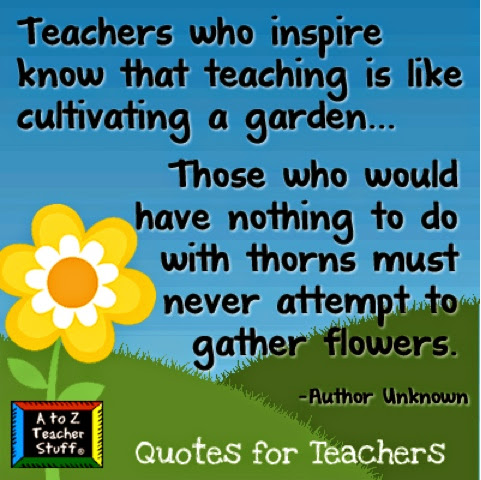Hi Bloggers..
Today, I was thinking about why I want to be a teacher. Of course I love children, the schedule of a teacher and having summers off. But my number one reason is that I want to make a difference in as many lives as I possibly can. This includes fellow co-workers, parents and most importantly the students. Every child deserves to be appreciated, praised and listened too. Some children will not receive this from home but I want to provide a place where they can feel safe and comfortable enough to share their feelings and emotions. I found this quote online that sums up what being a teacher really means..
"Teaching is not for the faint of heart because a teacher can literally go through the whole spectrum of emotions in an entire day. Kids do not just drop their personal lives at the classroom door and become consumers of knowledge. Even with their own emotions and those of 25+ students, a teacher has to put the needs of the students first. I may need more support in my classroom, or be upset that I cannot attend a particular technology conference, or dealing with personal relationship issues, but that all needs to be put aside for the good of those precious students."
http://timothyscholze.wordpress.com/2013/05/06/for-the-love-of-teaching-what-does-it-mean-to-be-a-teacher/
This little excerpt that I found is very powerful. Putting students first is the most important thing that you can do for a child. Children don't know how to deal with emotions like adults do, they express themselves differently and as a teacher I need to be ready everyday to put all their needs before mine. I want every single student to feel successful, loved, confident, and happiness every single day at school.
I wanted to pick one quote to finish this blog but there were so many that stood out to me... These are just a few that I loved.











